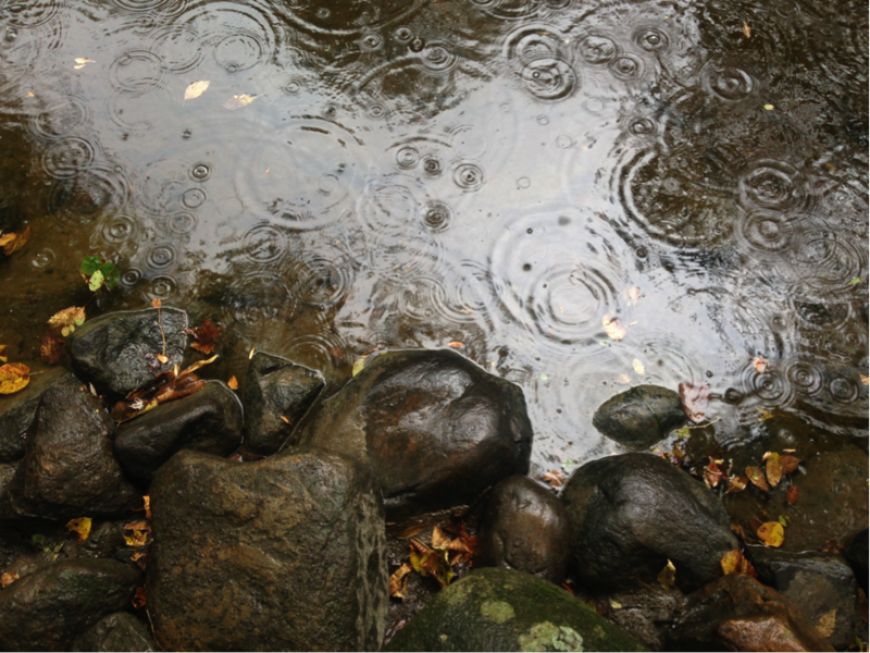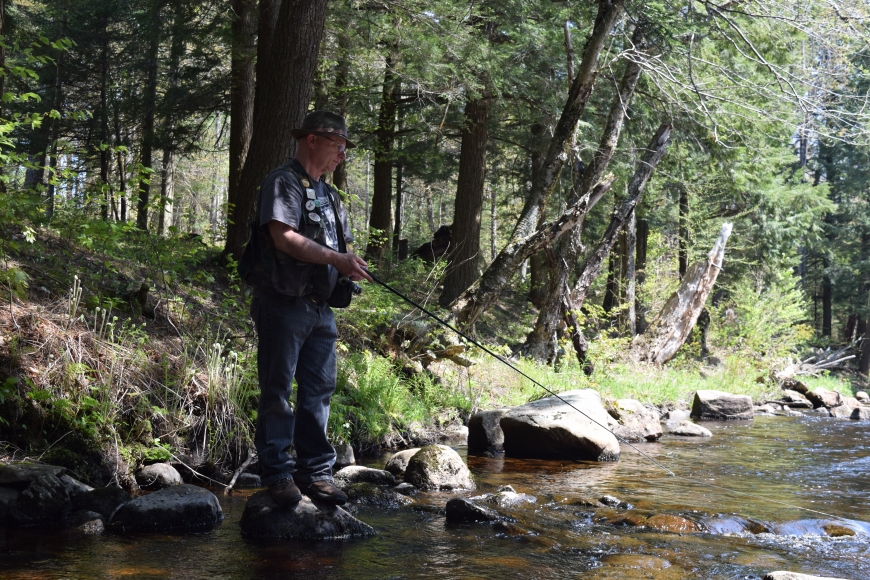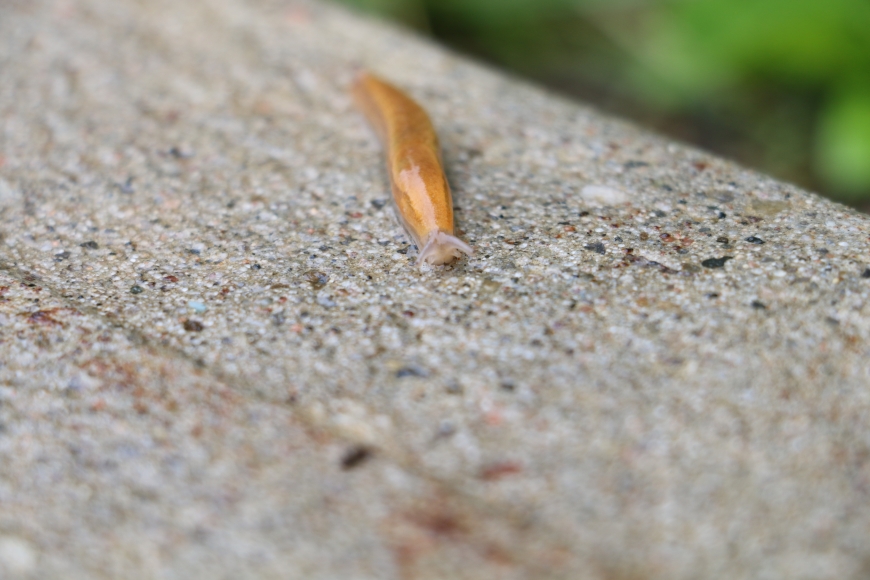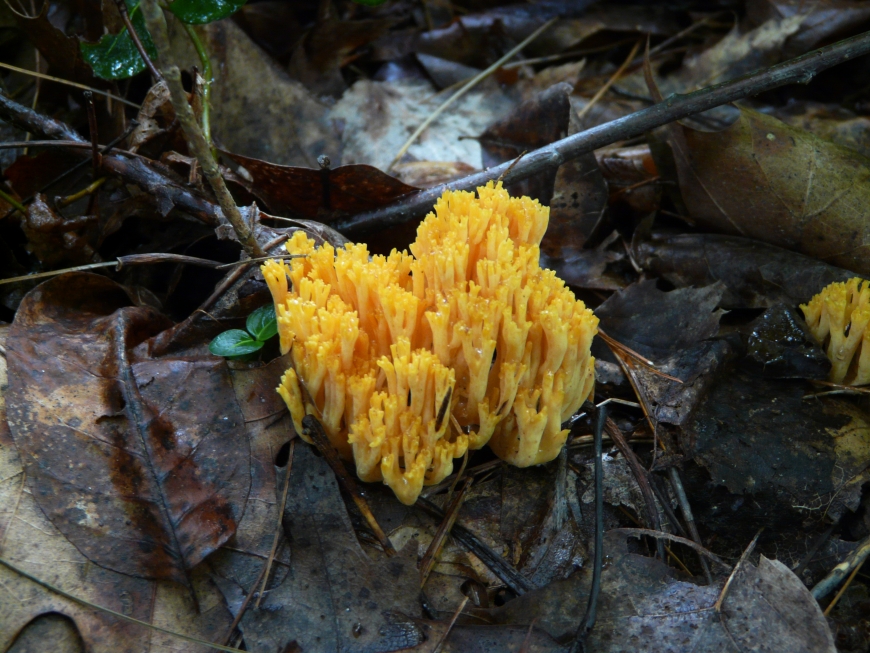



Ripple in Still Water. Photo: Jay Fuhrman.
An angler testing the waters. Photo: Molly McMasters.
The rain brought out the slugs! Photo: Molly McMasters.
A fantastic coral fungus. Photo: Jacob Malcomb.




It's Better When It's Wetter: Four Reasons to Get Out in the Rain
It may feel like these dreary days of rain will never end, but don’t fret! Rain brings many hidden gems out of the natural world that we usually don’t see during dryer weather. So, throw on your rain boots, grab an umbrella, and step out to explore our soggy wonderland!
1) Cast a New Light on Canoeing
Typically, canoeing is perceived as a sunny day activity. But sometimes, a paddle in the rain can be even better than one in the sun. First, there’s no need to lather on sunscreen, because the clouds have you covered! You can leave the bug dope at home, too, since black flies and mosquitoes stay out of the rain. Being on the water during a good rain releases a mystic covering of mist across the surface, and the smells that are brought out are hard to beat.
Aside from a paddle and life vest, a quality rain jacket is the most important piece of equipment for a rainy-day paddle.
And, hey, canoeing in the rain is better than not canoeing at all! Just be sure to get off the water at the first sign of any thunder or lightning.
2) The Fish are Hooked
A light rain can bring a smile to an angler’s face, because if they play it right, rain can be used as a tool to catch fish more easily. After a rain shower, insects hover closer to the water’s surface, which brings fish out to eat them. Runoff from the river or lake banks shuttles in nutrients and other morsels for the fish to nibble on. A good rain also contributes to oxygenating the water, which makes fish more active.
Fishermen must be stealthy and strategic in their timing, since there are narrow windows for the perfect biting times. Fish may not bite if an angler casts out during the rain, and starting to fish too late after the rain will not be effective, as the fish will already have full stomachs. The best times to fish are directly before and after rainfall.
3) The Slugs Come Out to Play
We’ve all had to do the graceful and complex dance of slug-smooshing avoidance the afternoon after a good rain. Slugs and snails make themselves known after a downpour because they require cool temperatures and high humidity to avoid drying out. They are composed mostly of water and produce lots of mucus, which demands constant hydration. When it’s sunny, warm, or breezy, they tend to stay hidden in cool and moist hiding places, so use this rainy opportunity to become acquainted with our squishy neighbors!
Slugs have two pairs of retractable tentacles on top of their heads. Light-sensitive eye spots are located on top of the longer pair, which means slugs can sense their surroundings, including you!
4) Rain Puts the ‘Fun’ in Fungus
Fungi grow best in dark, moist, and warm environments, so, during and after a long stretch of summer rain, there should be fungi a-plenty. Fungi generally grow on dead and fallen trees or under shady bushes. It is estimated that there are 1.5-5.1 million species of fungi on earth. With that much variety, studying the fungi just in your back yard could make for quite an adventure. You could find a new kind of mushroom each time you go out to look!
Fungi play a vital role in our community by breaking down, or decomposing, dead material to return the nutrients to the earth. Some types of fungus even develop special relationships with plants in which they both benefit, which is called mutualism. If you’ve ever eaten beans, basil, squash, peppers, or virtually any other vascular plant, you most likely have fungus to thank. Some mushrooms are even edible for humans, although you should never eat a mushroom unless you know exactly what it is or have an expert with you. The world of fungi is a vast one!
Hopefully, after learning about all these beautiful things brought about by rain, you see that a rainy day is not so gloomy after all. Rain and clouds are a vital part of our ecosystem, and though they may seem ugly at face-value, we just couldn’t live without them!
If you see something we mentioned in this article, post it as an encounter on natureupnorth.org so we can enjoy it too! Consider making an effort to get outside and take a closer look than you usually do, and you may notice something you never did before. Seeing is believing!

